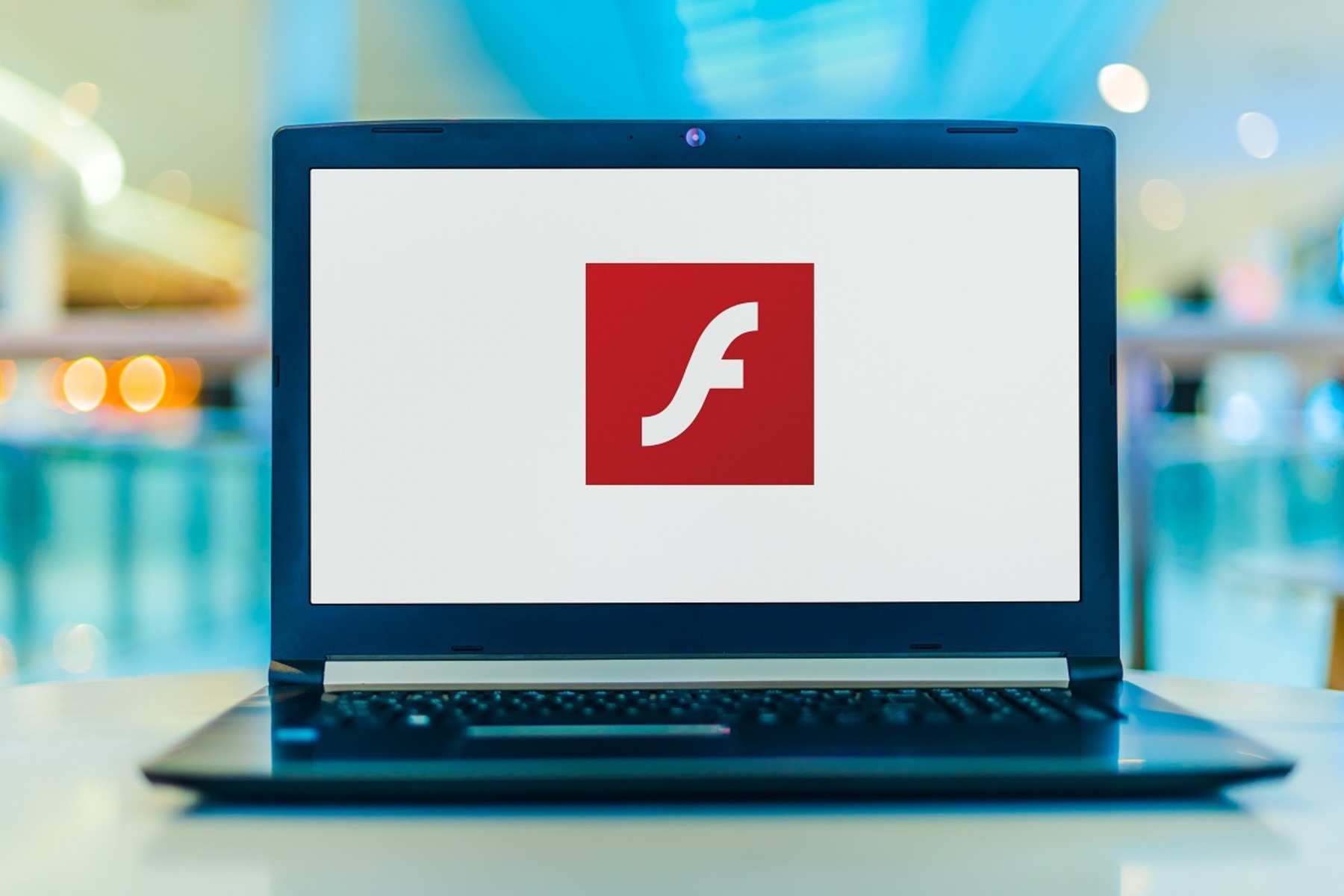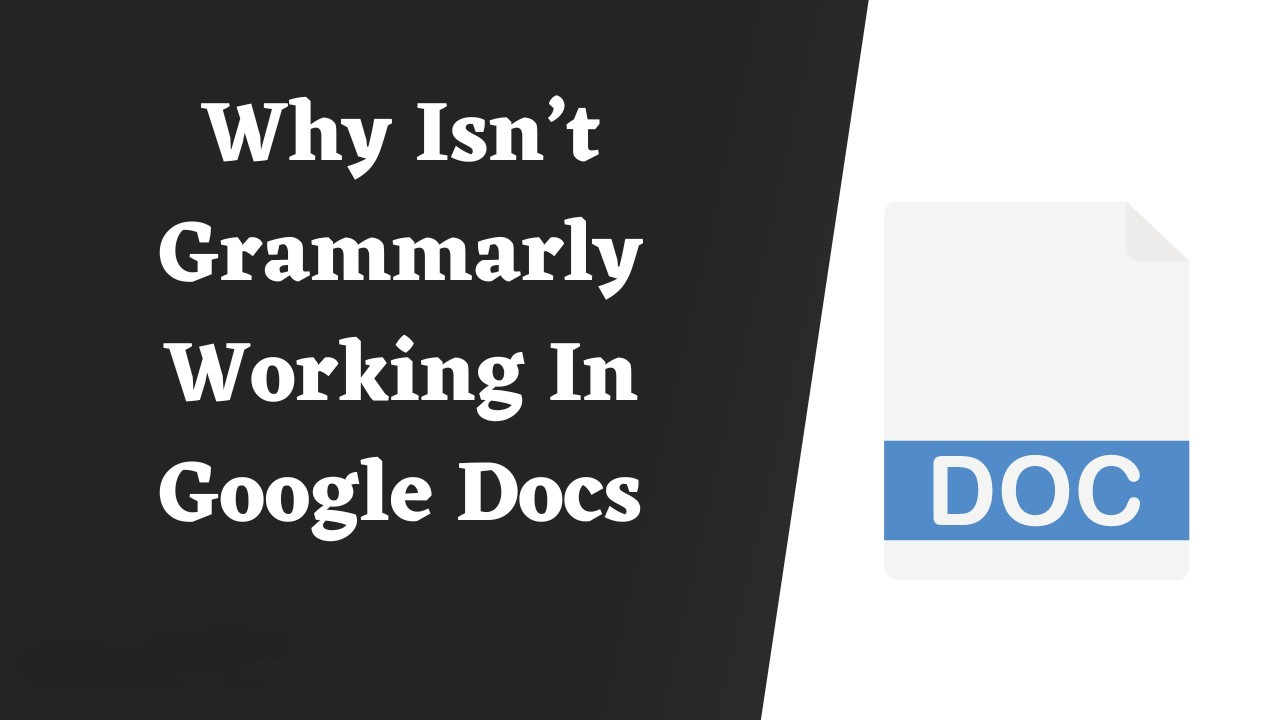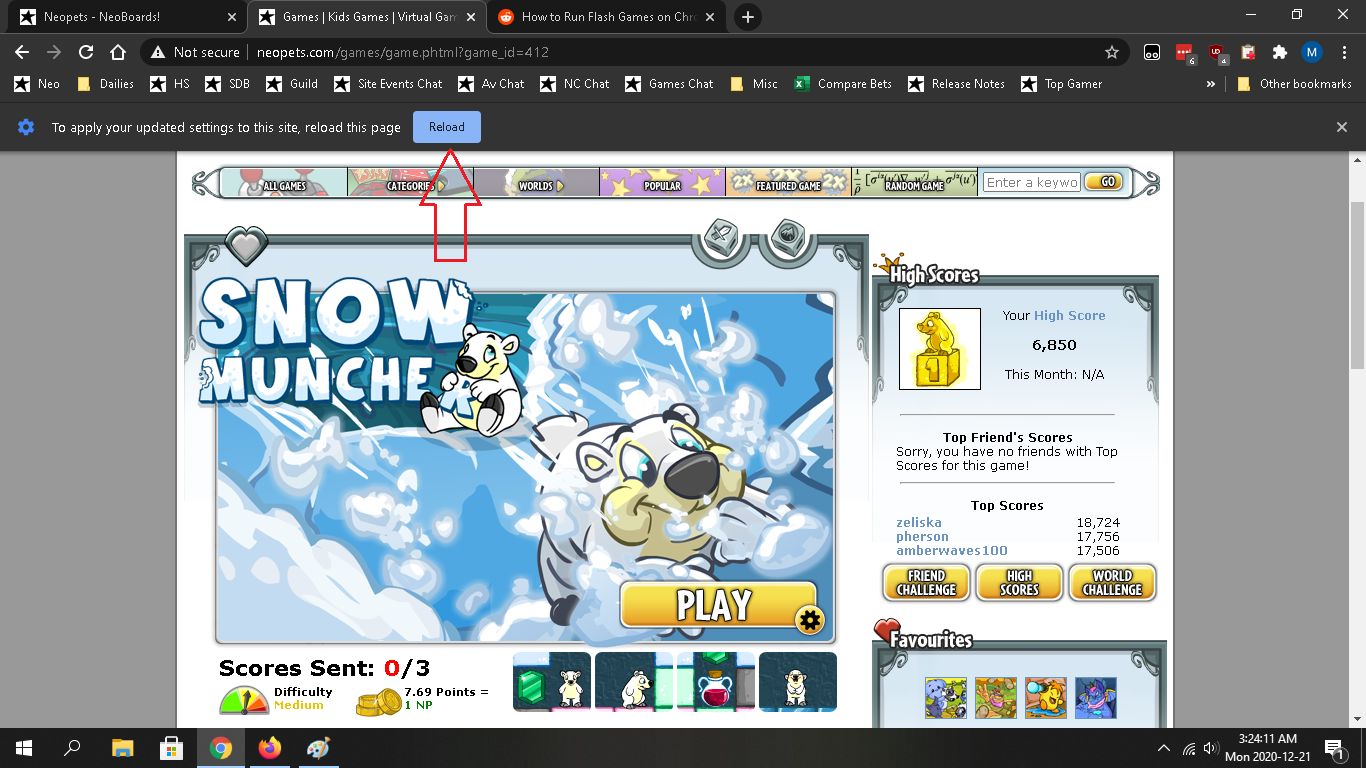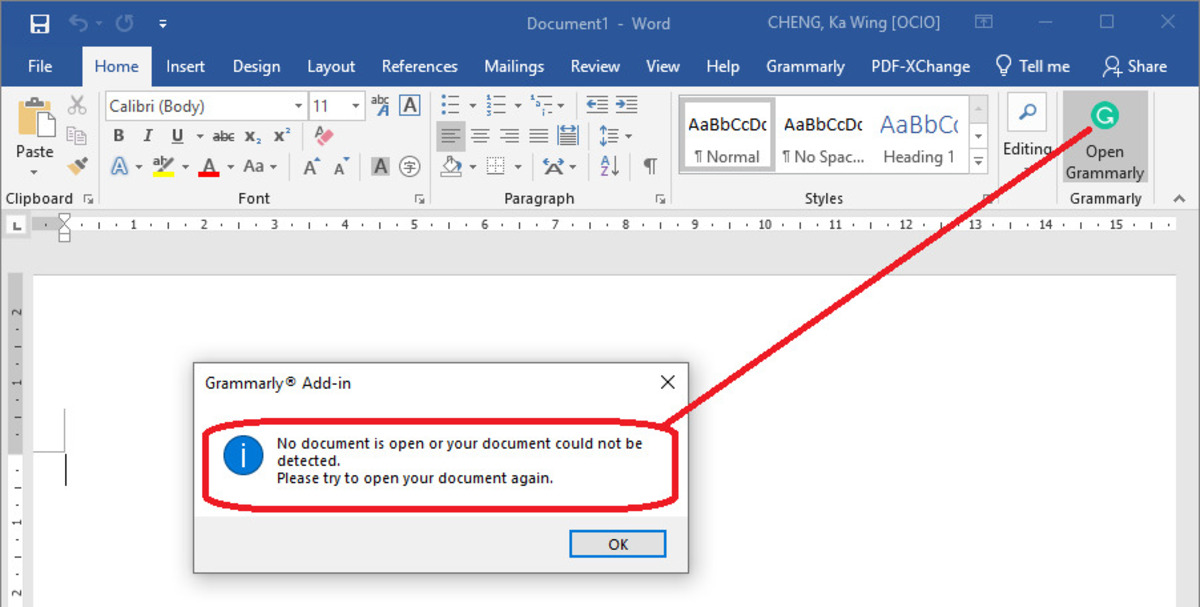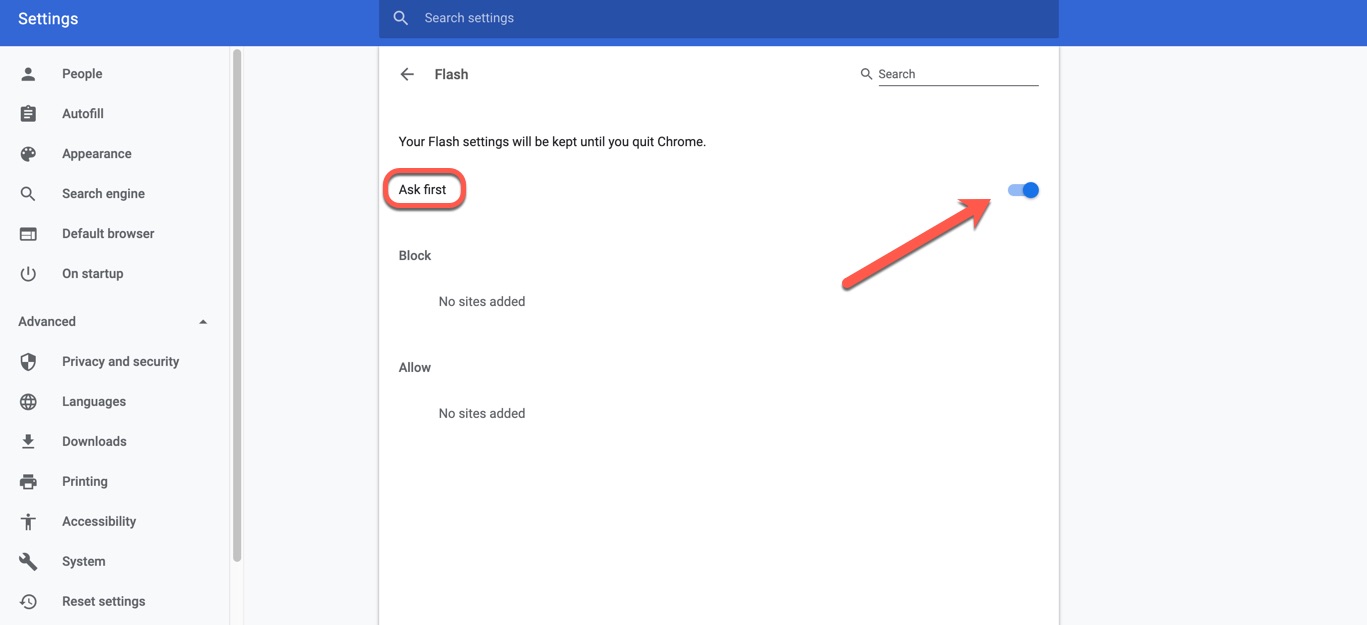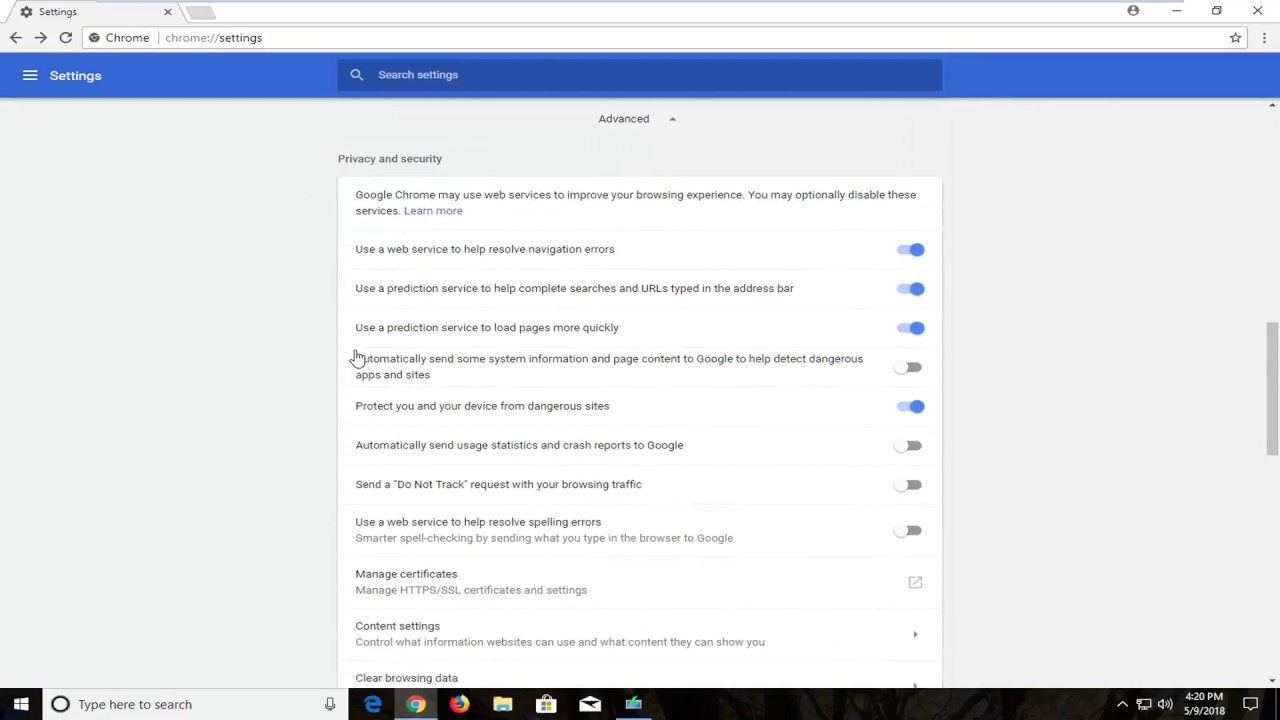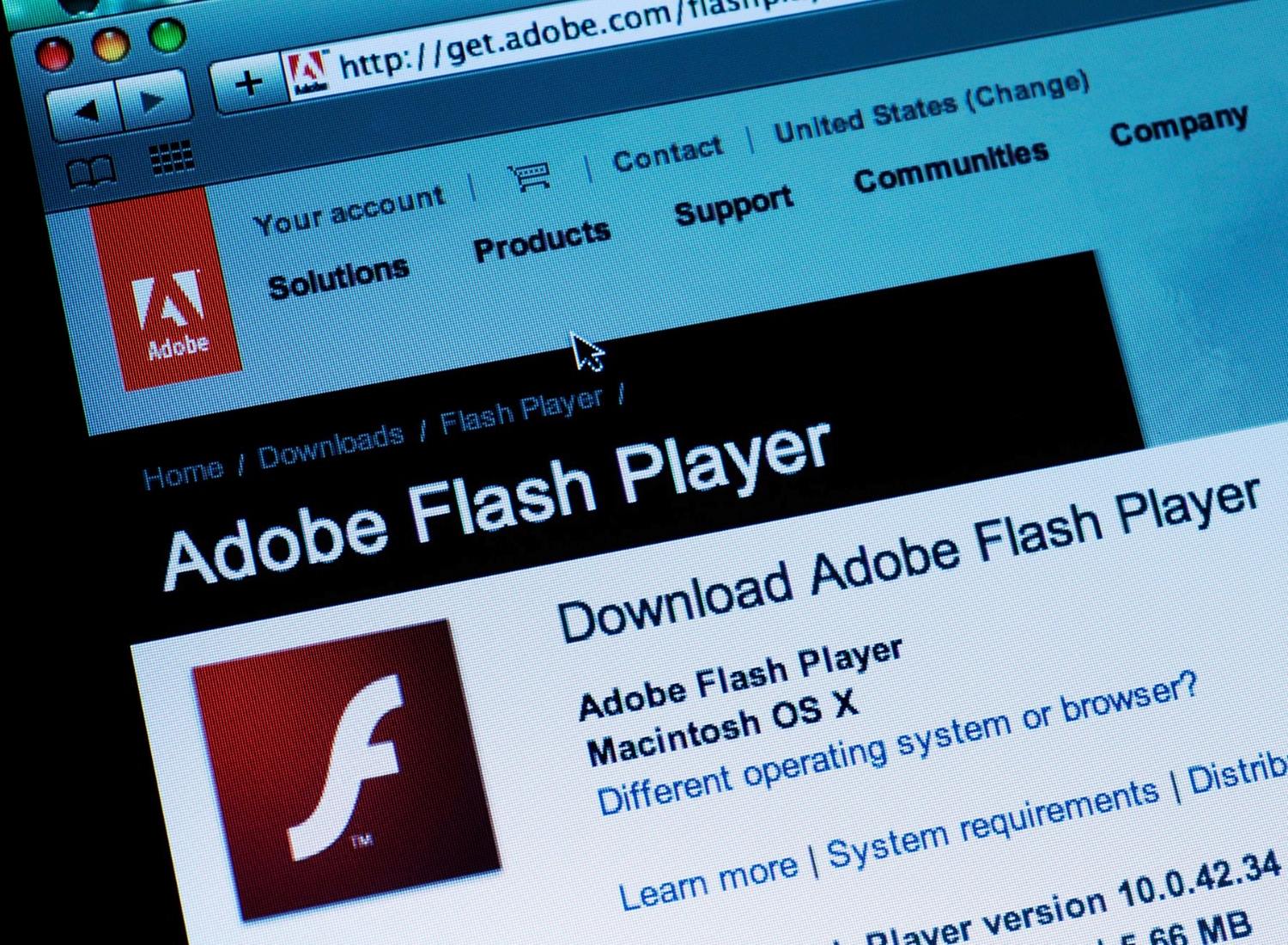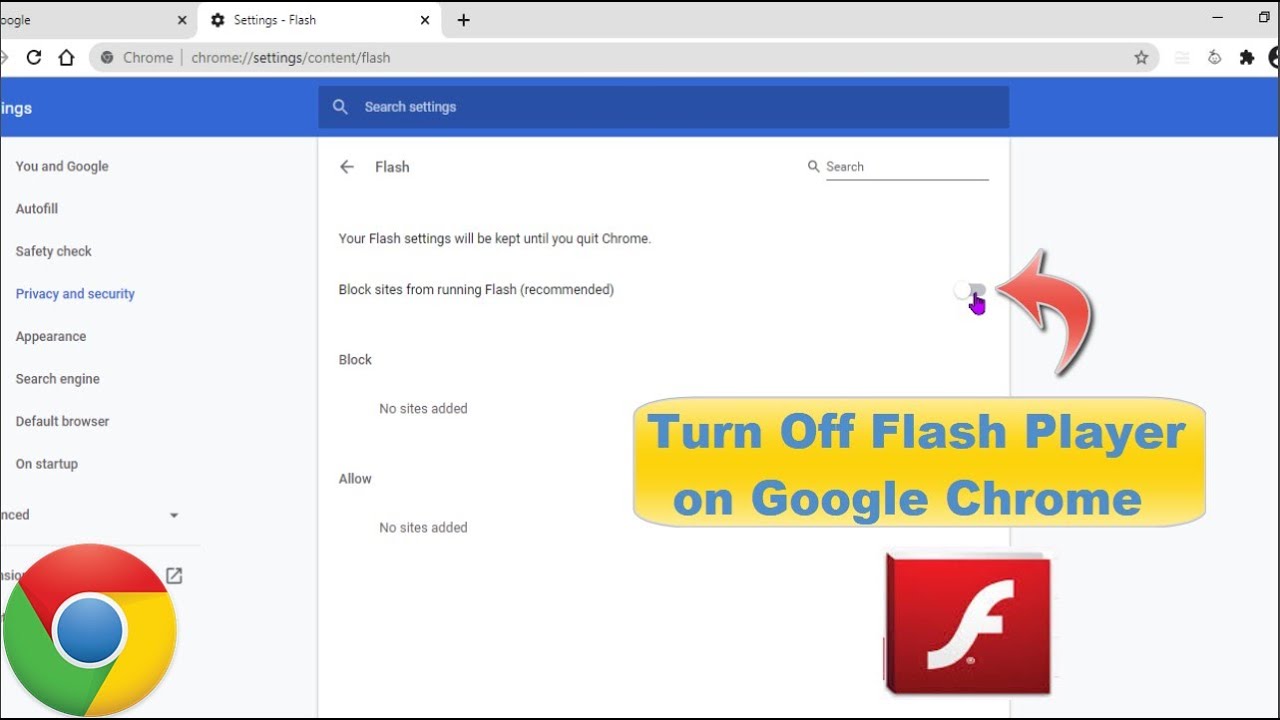Introduction
Google Chrome is one of the most popular web browsers, known for its speed, simplicity, and user-friendly interface. It supports a wide range of extensions and plugins, including Adobe Flash Player, which allows users to view multimedia content such as animations, videos, and interactive applications. However, at times, users may encounter issues with Flash Player not working as expected on Google Chrome. This can be frustrating, especially when trying to access Flash-based content on websites.
In this article, we will explore various troubleshooting steps to address the issue of Flash Player not working on Google Chrome. By following these steps, you can potentially resolve the issue and enjoy seamless access to Flash-based content within the browser. Whether you're encountering error messages, experiencing playback issues, or noticing that Flash content isn't loading properly, the solutions provided here can help you troubleshoot and resolve the issue.
It's important to note that as technology evolves, the use of Flash Player has become less common, with many websites transitioning to alternative technologies such as HTML5 for multimedia content. However, there are still instances where Flash content is encountered, and having a functional Flash Player in Google Chrome can be essential for accessing certain websites and applications.
By understanding the potential causes of Flash Player issues and learning how to address them, you can enhance your browsing experience and ensure that you're able to interact with Flash-based content when needed. Let's delve into the troubleshooting steps to address the issue of Flash Player not working on Google Chrome, empowering you to overcome this challenge and make the most of your browsing experience.
Check for Updates
Ensuring that Google Chrome and Adobe Flash Player are up to date is crucial in resolving issues related to Flash Player not working on the browser. Outdated software can lead to compatibility issues and security vulnerabilities, impacting the performance of Flash-based content. Here's how you can check for updates and ensure that both Google Chrome and Flash Player are running the latest versions:
-
Update Google Chrome:
- Click on the three-dot menu icon in the top-right corner of the browser window.
- Navigate to "Help" and select "About Google Chrome."
- Chrome will automatically check for updates and install them if available. If an update is found, relaunch the browser to apply the latest version.
-
Update Adobe Flash Player:
- Visit the official Adobe Flash Player download page using Google Chrome.
- Check if the installed version of Flash Player is the latest one available. If not, follow the prompts to download and install the latest version.
By ensuring that both Google Chrome and Adobe Flash Player are updated to their latest versions, you can mitigate potential compatibility issues and benefit from performance improvements and security patches. This proactive approach can often resolve issues related to Flash Player not working on Google Chrome, ensuring a smoother browsing experience when interacting with Flash-based content.
It's important to note that as technology continues to advance, the reliance on Flash Player for web content has diminished, with many websites transitioning to alternative technologies. However, for legacy content and specific use cases, having an updated Flash Player within Google Chrome can still be essential. By regularly checking for updates, you can stay ahead of potential compatibility issues and security vulnerabilities, ensuring that your browsing experience remains seamless and secure.
In the next sections, we will explore additional troubleshooting steps to address the issue of Flash Player not working on Google Chrome, providing a comprehensive guide to help you overcome this challenge and make the most of your browsing experience.
Enable Flash Player
Enabling Flash Player within Google Chrome is essential for accessing and interacting with Flash-based content on websites. In some instances, Flash Player may be disabled by default or require manual activation within the browser settings. Here's a detailed guide on how to enable Flash Player in Google Chrome:
-
Access Chrome Settings:
- Click on the three-dot menu icon in the top-right corner of the browser window.
- Navigate to "Settings" to access the browser's configuration options.
-
Locate Content Settings:
- Within the Settings menu, scroll down and click on "Privacy and security" in the left-hand sidebar.
- Under the "Privacy and security" section, select "Site settings."
-
Enable Flash:
- Within the "Site settings" menu, locate and click on "Flash."
- Toggle the switch to enable "Ask first (recommended)" or "Allow sites to run Flash."
-
Manage Exceptions (Optional):
- If needed, you can manage exceptions for specific websites by clicking on "Add" under the "Allow" section within the Flash settings. This allows you to specify which websites are allowed to run Flash content.
By following these steps, you can enable Flash Player within Google Chrome, allowing you to seamlessly access and interact with Flash-based content on websites. It's important to note that while enabling Flash Player can address issues related to its functionality, it's essential to exercise caution when interacting with Flash content due to potential security risks associated with the technology.
As technology continues to evolve, the use of Flash Player has become less prevalent, with many websites transitioning to alternative technologies such as HTML5 for multimedia content. However, for legacy content and specific use cases, having the ability to enable Flash Player within Google Chrome can be crucial for accessing certain websites and applications.
In the next sections, we will explore additional troubleshooting steps to address the issue of Flash Player not working on Google Chrome, providing a comprehensive guide to help you overcome this challenge and make the most of your browsing experience.
Clear Cache and Cookies
Clearing the cache and cookies in Google Chrome can effectively resolve issues related to Flash Player not working on the browser. Over time, the cache and cookies stored by the browser can become outdated or corrupted, potentially leading to conflicts with Flash-based content. By clearing these temporary files, you can refresh the browser's data and eliminate potential obstacles that may be impacting the functionality of Flash Player. Here's a detailed guide on how to clear the cache and cookies in Google Chrome:
-
Access Chrome Settings:
- Click on the three-dot menu icon in the top-right corner of the browser window.
- Navigate to "Settings" to access the browser's configuration options.
-
Clear Browsing Data:
- Within the Settings menu, scroll down and click on "Privacy and security" in the left-hand sidebar.
- Under the "Privacy and security" section, select "Clear browsing data."
- Choose the time range for which you want to clear the data. Selecting "All time" ensures that all cache and cookies are cleared.
- Check the boxes next to "Cookies and other site data" and "Cached images and files" to include them in the clearing process.
- Click on "Clear data" to initiate the clearing process.
By following these steps, you can effectively clear the cache and cookies in Google Chrome, potentially resolving issues related to Flash Player not working as expected. It's important to note that clearing browsing data may log you out of websites and remove site preferences, but it can also eliminate potential conflicts that may be hindering the functionality of Flash-based content.
As technology continues to advance, the reliance on Flash Player for web content has diminished, with many websites transitioning to alternative technologies. However, for legacy content and specific use cases, ensuring that the cache and cookies are regularly cleared can contribute to a smoother browsing experience when interacting with Flash-based content.
In the next sections, we will explore additional troubleshooting steps to address the issue of Flash Player not working on Google Chrome, providing a comprehensive guide to help you overcome this challenge and make the most of your browsing experience.
Disable Extensions
Disabling extensions in Google Chrome can be a crucial step in troubleshooting issues related to Flash Player not working as expected. Extensions are additional software components that enhance the functionality of the browser, providing features such as ad blocking, password management, and productivity tools. However, certain extensions can conflict with Flash Player, leading to performance issues and unexpected behavior when interacting with Flash-based content. By disabling extensions, you can isolate potential conflicts and determine if they are contributing to the Flash Player issue. Here's a detailed guide on how to disable extensions in Google Chrome:
-
Access Chrome Extensions:
- Click on the three-dot menu icon in the top-right corner of the browser window.
- Navigate to "More tools" and select "Extensions" from the expanded menu.
-
Disable Extensions:
- Within the Extensions menu, you will see a list of installed extensions.
- To disable an extension, locate the toggle switch next to the extension's name and click on it to turn it off. This disables the extension temporarily.
-
Test Flash Player Functionality:
- After disabling the extensions, revisit a website or application that utilizes Flash-based content.
- Check if the Flash Player functionality has improved or if the issue persists. By testing Flash Player with extensions disabled, you can determine if any of the extensions were contributing to the problem.
-
Enable Extensions (Optional):
- If disabling extensions resolves the Flash Player issue, you can selectively re-enable the extensions one by one to identify the specific extension causing the conflict.
- Re-enable an extension by clicking on the previously toggled switch, turning it back on.
Disabling extensions in Google Chrome provides a systematic approach to identifying potential conflicts with Flash Player. By isolating the impact of extensions on Flash-based content, you can effectively troubleshoot and resolve issues related to Flash Player not working as expected. It's important to note that while extensions enhance the browsing experience, conflicts with Flash Player can arise due to compatibility issues or conflicting functionalities. By temporarily disabling extensions and testing Flash Player functionality, you can pinpoint the root cause of the issue and take appropriate action to ensure a seamless browsing experience.
As technology continues to evolve, the ability to manage extensions and their impact on browser functionality becomes increasingly important. By understanding how to disable and enable extensions in Google Chrome, users can effectively troubleshoot a wide range of issues, including those related to Flash Player. In the next sections, we will explore additional troubleshooting steps to address the issue of Flash Player not working on Google Chrome, providing a comprehensive guide to help users overcome this challenge and make the most of their browsing experience.
Check for Conflicting Software
In some cases, conflicting software installed on your system can interfere with the functionality of Flash Player in Google Chrome. This interference can manifest as issues such as Flash content not loading, playback errors, or unexpected behavior when interacting with Flash-based elements on websites. Identifying and addressing conflicting software is a crucial step in troubleshooting the Flash Player not working on Google Chrome.
To check for conflicting software, you can start by reviewing the applications and plugins installed on your computer, particularly those that are known to interact with web content and multimedia. Here's a detailed guide on how to check for conflicting software and address potential issues:
-
Review Installed Applications:
- Navigate to the list of installed applications on your computer, either through the Control Panel on Windows or the Applications folder on macOS.
- Identify any software that is related to multimedia playback, web browsers, or content management. This may include media players, download managers, or browser toolbars.
-
Uninstall or Disable Conflicting Software:
- If you identify software that may be conflicting with Flash Player in Google Chrome, consider uninstalling or disabling it temporarily.
- Follow the standard procedures for uninstalling software on your operating system. For browser extensions or plugins, access the respective settings within the browser to disable or remove them.
-
Restart Google Chrome:
- After uninstalling or disabling conflicting software, restart Google Chrome to apply the changes.
- Revisit a website or application that utilizes Flash-based content to check if the issue has been resolved. Testing Flash Player functionality after addressing conflicting software can help determine if the interference has been mitigated.
-
Update or Reinstall Conflicting Software (Optional):
- If the conflicting software is essential for your workflow, consider updating it to the latest version or reinstalling it from a trusted source.
- Ensure that any updates or reinstallations are performed from official sources to avoid potential security risks or compatibility issues.
By reviewing and addressing conflicting software, you can potentially resolve issues related to Flash Player not working on Google Chrome. Identifying and mitigating the impact of conflicting software is essential for maintaining a smooth browsing experience and ensuring the seamless functionality of Flash-based content.
As technology continues to advance, the interaction between software components becomes increasingly complex. By understanding how conflicting software can impact Flash Player in Google Chrome, users can take proactive steps to troubleshoot and resolve potential issues, ultimately enhancing their browsing experience.
Reset Chrome Settings
Resetting Chrome settings can serve as a comprehensive solution to address a wide range of issues, including the malfunctioning of Flash Player on the browser. This process effectively restores Chrome to its default state, eliminating potential configuration conflicts and settings that may be impacting the functionality of Flash-based content. By initiating a reset of Chrome settings, users can effectively troubleshoot and resolve issues related to Flash Player not working as expected.
Here's a detailed guide on how to reset Chrome settings:
-
Access Chrome Settings:
- Click on the three-dot menu icon in the top-right corner of the browser window.
- Navigate to "Settings" to access the browser's configuration options.
-
Reset Chrome Settings:
- Within the Settings menu, scroll down and click on "Advanced" to reveal additional options.
- Under the "Reset and clean up" section, select "Restore settings to their original defaults."
-
Confirm the Reset:
- A confirmation window will appear, outlining the changes that will occur as a result of the reset.
- Review the information provided and click on "Reset settings" to initiate the process.
-
Restart Google Chrome:
- After resetting the browser settings, restart Google Chrome to apply the changes.
By following these steps, users can effectively reset Chrome settings, potentially resolving issues related to Flash Player not working as expected. It's important to note that the reset process restores Chrome to its default state, removing any customizations, extensions, and settings that may have been contributing to the Flash Player issue.
As technology continues to evolve, the ability to reset browser settings serves as a valuable troubleshooting tool, allowing users to address a wide range of issues that may impact their browsing experience. By understanding how to reset Chrome settings, users can proactively troubleshoot and resolve potential conflicts, ensuring a seamless and optimized environment for interacting with Flash-based content.
In the next sections, we will continue to explore additional troubleshooting steps to address the issue of Flash Player not working on Google Chrome, providing a comprehensive guide to help users overcome this challenge and make the most of their browsing experience.
Conclusion
In conclusion, troubleshooting issues related to Flash Player not working on Google Chrome involves a systematic approach to identify and address potential obstacles. By following the troubleshooting steps outlined in this article, users can effectively resolve issues and ensure the seamless functionality of Flash-based content within the browser.
It's important to emphasize the evolving landscape of web technologies, with many websites transitioning away from Flash-based content in favor of more modern and secure alternatives such as HTML5. However, for legacy content and specific use cases, having a functional Flash Player within Google Chrome can still be essential for accessing certain websites and applications.
By checking for updates and ensuring that both Google Chrome and Adobe Flash Player are running the latest versions, users can mitigate potential compatibility issues and benefit from performance improvements and security patches. Regularly updating software is a proactive measure that contributes to a smoother browsing experience.
Enabling Flash Player within Google Chrome and managing browser settings allows users to interact with Flash-based content seamlessly. However, it's important to exercise caution when enabling Flash Player due to potential security risks associated with the technology.
Clearing the cache and cookies, as well as disabling conflicting extensions and software, are essential steps in troubleshooting Flash Player issues. These actions can help eliminate potential conflicts and refresh the browser's data, contributing to a more optimized browsing experience.
In the event of persistent issues, resetting Chrome settings serves as a comprehensive solution to address a wide range of potential conflicts, restoring the browser to its default state and eliminating configuration issues that may impact Flash Player functionality.
By understanding and implementing these troubleshooting steps, users can overcome the challenge of Flash Player not working on Google Chrome, ensuring a more seamless and enjoyable browsing experience. As technology continues to advance, staying informed about best practices for troubleshooting browser-related issues is essential for maximizing the utility of web browsers and accessing diverse online content.
In summary, the proactive approach to troubleshooting Flash Player issues in Google Chrome empowers users to navigate the evolving web landscape with confidence, ensuring that they can access and interact with multimedia content effectively and securely.







